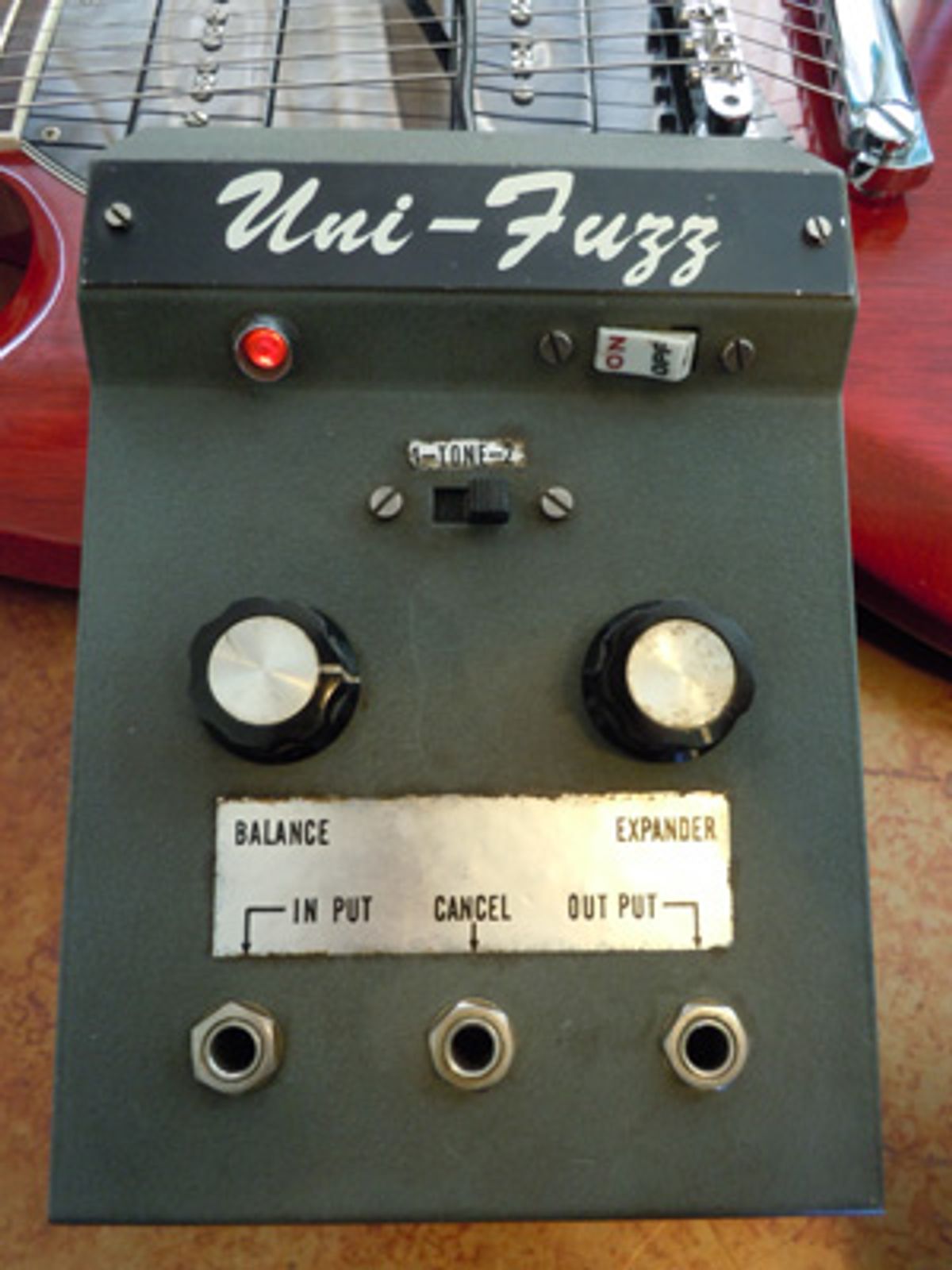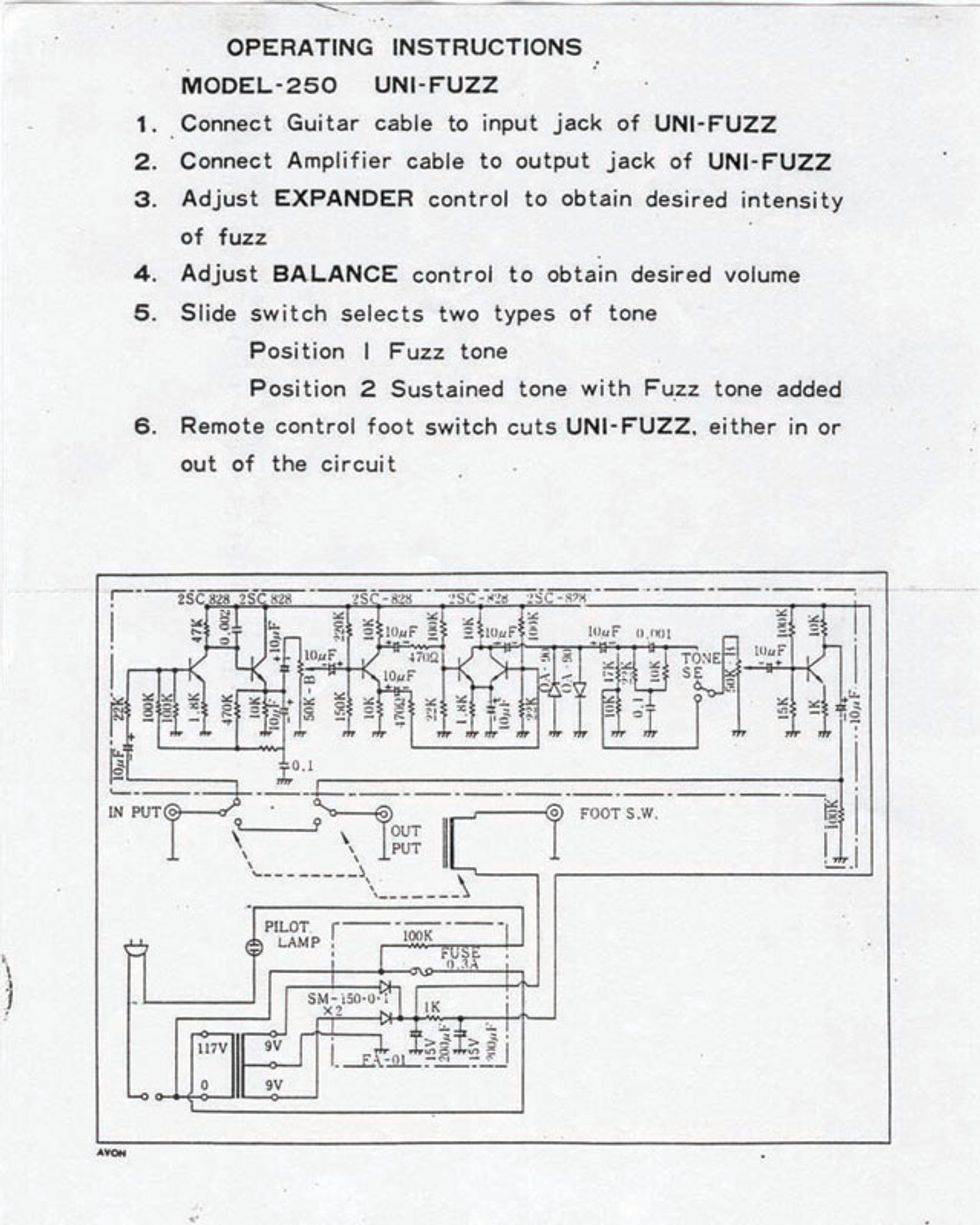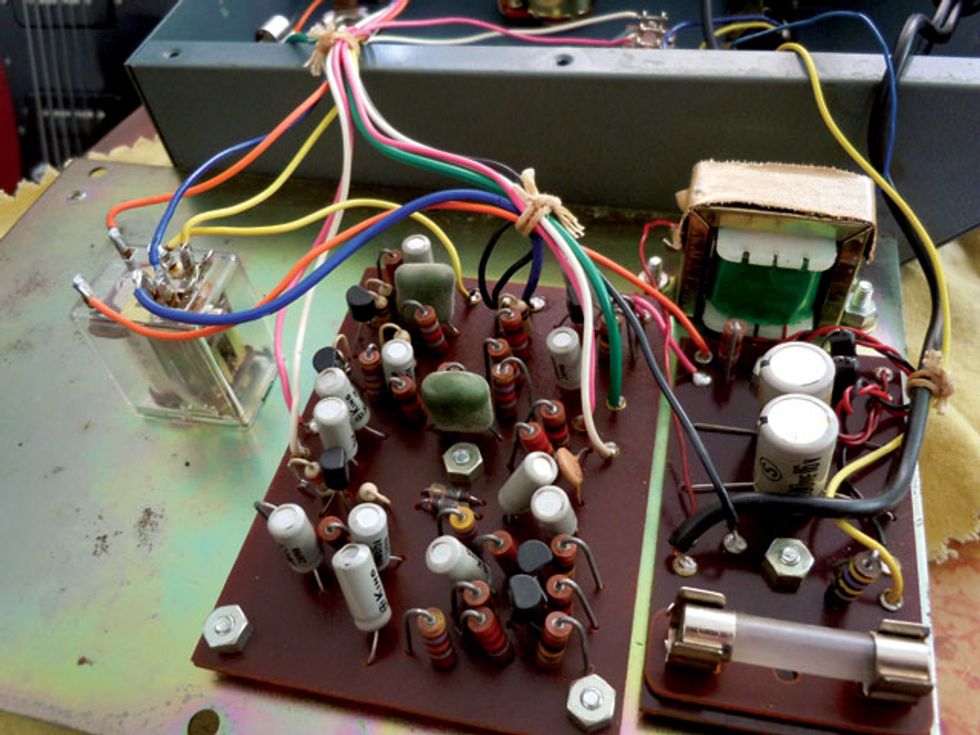
Its sound is very intense and fat, but still is responsive to how your guitar volume is set—lots of shades of fuzz and destruction to be had.
The 21st century guitarist wants endless amp/effect/cabinet options in a sardine-tin-sized package at the cost of a dinner for two at Applebee’s. (Yes, we know some purists still plug their ’57 Strat into an original tweed Fender Twin with a coil cable.) That said, it’s always fun to take a look at vintage effects that paved the way. In 1967, long before the current multi-effect-Maxwell-Smart craze, the Japanese company Honey launched the dual-purpose Psychedelic Machine. The briefcase-sized unit combined two of the world’s most unmistakable sounds for the first time— the fuzz and chorus/vibrato. A year later, Shin-ei took over manufacturing for Honey and decided that these effects would fare better as stand-alone offerings (Univox was Shin-ei’s U.S. distributor). In 1968, they unveiled two separate stompboxes—the Super-Fuzz and the Uni-Vibe.
These pedals were taken to Mt. Olympus-heights by two heavy hitters— Pete Townshend and Jimi Hendrix. The Super-Fuzz was deified after Townshend used it throughout the Who’s 1970 Live at Leeds performance, but most notably during the rambunctious opening in “Sparks” and the grisly, snarling solo in “Young Man Blues.” The Uni-Vibe helped Hendrix mystify guitarists and listeners with its swirling chaos in the Band of Gypsys’ “Machine Gun” and the more silky, waving textures in “Izabella” off of First Rays of the New Rising Sun. Today, the Super-Fuzz still breathes fire in Dan Auerbach’s speaker-eating tone, playing a central role in Black Keys cuts like “Thickfreakness” and “’Till I Get My Way.”
The following year, Shin-ei developed the U-250 Uni-Fuzz, which was an AC-powered brother to their Super-Fuzz. As seen here, the Uni-Fuzz is housed within a brick-sized enclosure resembling a military- ammo canister. Its minimal controls are balance (volume) and expander (fuzz), a 2-way tone switch, and an on/off switch. The tone switch engages a 1 kHz filter that scoops the mids creating a robust, bass-y tone. The on/off switch kicks on the circuit that produces both an upper octave and a slight, lower octave—giving the Uni-Fuzz some compression and a mild ring-modulator effect.

Photo courtesy Univox Corp

“Like many purveyors of fuzz, my interest had primarily been focused on Fuzz Faces and Tone Benders, but after sampling a late-’60s Super-Fuzz at Rivington Music in NYC, I realized designer Fumio Mieda caught magic in a bottle,” says Mark Hunter, owner of this ’69 Uni-Fuzz. “I have a few other fuzzes and have spent some time with a Super-Fuzz, but there’s nothing quite like the Uni-Fuzz I found on eBay. Its sound is very intense and fat, but still is responsive to how your guitar volume is set—lots of shades of fuzz and destruction to be had.”
Unabashedly so, Hunter admits to dropping a small chunk of coin on his vintage dirtbox, but says the Uni-Fuzz has repaid him by way of woolly inspiration and musical journeys.
“Whenever I get in a rut or just need something to perk a few new ideas out of my fingers, I can always count on the Uni-Fuzz to break things up [laughs],” says Hunter. “The ring-modulator aspect of it inspired me to write some music based specifically on that sound. To me, that’s worth the investment in itself.”
A special thanks to Mark Hunter for the opportunity to feature this fine piece of gear and its story.
Got some gear that would make a great Gear of the Month? Then email pics and its story to us at gotm@premierguitar.com.


